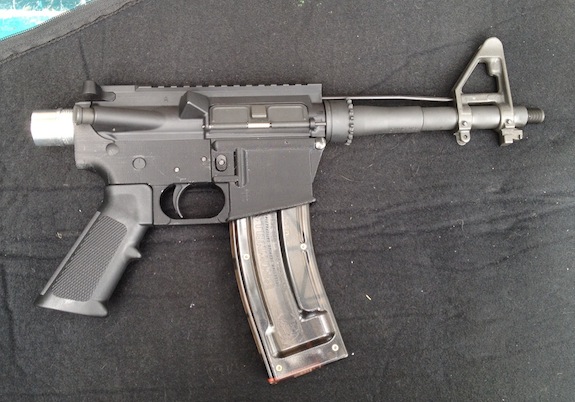Open For Business: The 3D Printed Gun Store
After Makerbot and Stasys pulled support, 3-D gun printers have found help elsewhere, and opened an online database of designs

The first 3-D printed gun. Image: Haveblue
Earlier this year, Cody Wilson started something called the Wiki Weapons project. Essentially, Wilson wanted to give anyone with access to a 3-D printer the ability to print a weapon. The internet was generally displeased with this idea, as were Makerbot and Stasys, who pulled their support. But Wilson wasn’t deterred, and his online gun store is now open.
Makerbot Industries decided it didn’t want to deal in arms (in their terms of agreement they write explicitly that users will not do anything that “promotes illegal activities or contributes to the creation of weapons”) and purged all the gun files. And when Stasys, the people who made the 3-D printer Wilson was using, found out what he was up to, they asked for it back.
But Wilson found interest elsewhere. Wired writes:
Cody Wilson, founder of the Wiki Weapon project, tells Danger Room that the unnamed company’s owner “wanted to offer me a safe haven, basically.” Wilson describes the company as a “private defense firm” in San Antonio, Texas, but the company’s owner is wary of negative publicity and Wilson doesn’t want to reveal the firm’s name without consent.
And now, Wilson’s online store is open. The site is an online repository for firearms designs. They write:
Welcome to DEFCAD, operated by Defense Distributed. This site is a makeshift response to Makerbot Industries’ decision to censor files uploaded in good faith at Thingiverse, specifically firearms-related files.
We are hosting as many of the pulled files as we can find.
There are a few things to clear up about these guns. First is that the entire gun isn’t 3-D printed. Only one part of it is: the lower receiver. For those unfamiliar with guns, the lower receiver is the section that holds the mechanical parts of a gun, including a trigger housing and the bolt carrying mechanism (the part that slides back and forth to reload the weapon). But without the lower receiver the gun doesn’t fire. The Atlantic Wire writes:
The lower receiver is arguably the most important part of the gun, though, since it basically holds everything together, and according to the Gun Control Act of 1968, it’s important enough to be regulated as if it were the entire gun itself. In fact, the lower receiver is the gun in the eyes of the law. However, it’s less difficult to get the various other parts of a gun, like the barrel, the stock and the trigger.
So while Wilson’s company doesn’t help people 3-D print the whole gun, it does help print the most important part.
Second, the guns don’t actually work that well. In one test from early December the gun fell apart after six rounds. Wired writes:
But that was also the point, the group’s founder tells Danger Room. “We knew it would break, probably,” says Cody Wilson, who heads the Wiki Weapon project. “But I don’t think we thought it’d break within six . We thought it’d break within 20.”
Of course, Wilson knows you only have to fire a gun once to kill someone. He told Forbes:
“You don’t need to be able to put 200 rounds through it…It only has to fire once. But even if the design is a little unworkable, it doesn’t matter, as long as it has that guarantee of lethality.”
“If a gun’s any good, it’s lethal. It’s not really a gun if it can’t threaten to kill someone. You can print a lethal device. It’s kind of scary, but that’s what we’re aiming to show.”
Of course, this technology will get better, and the guns will get stronger. The world will have to figure out just how it wants to deal with 3-D printed guns. But until then, potential gun printers just have Wilson’s website, which is now open for business.
More from Smithsonian.com:
It’s All Fun and Games Until Someone 3D-Prints a Gun
The Smithsonian’s Gun Room
/https://tf-cmsv2-smithsonianmag-media.s3.amazonaws.com/accounts/headshot/Rose-Eveleth-240.jpg)
/https://tf-cmsv2-smithsonianmag-media.s3.amazonaws.com/accounts/headshot/Rose-Eveleth-240.jpg)